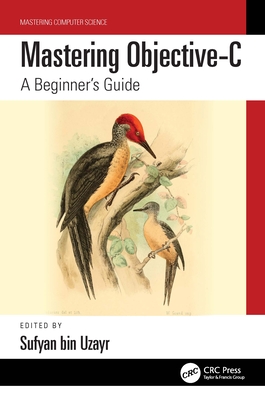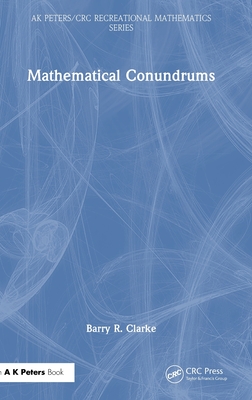图书简介
We are at a crucial time for the production and dissemination of knowledge - one in which the scientific community is questioning the nature of the digital humanities. Within this context, Learner Support in Online Learning Environments proposes, by taking into consideration the notion of assistance in a learning context, an original method of positioning digital resources for teachers, students and researchers in the humanities and social sciences. Questioning existing theoretical frameworks and prototypes, learner support in digital environments is presented as both a process and a result integrating a variety of resources. Some of these resources already exist, some may be adapted from existing objects and still others have yet to be imagined. The end goal is to facilitate both independent and group-based learning activities.
Foreword ix Acknowledgments xiii Introduction xv Part 1. Definition of Assistance in the Digital Humanities Field 1 Introduction to Part 1 3 Chapter 1. Digital Humanities Context 5 1.1. Knowledge in humanities and social sciences should be structured through interaction 6 1.2. Lines of thought 9 1.3. Fields of actions 11 1.4. Digital resources at the heart of digital humanities 16 1.5. Conclusion: digital assistance in the fields of action 20 Chapter 2. Digital Assistance Concept 23 2.1. Definition of assistance in a few major trends in educational psychology 25 2.2. Assistance as a cycle 29 2.3. Assistance as a response to a need 33 2.3.1. Theoretical framework: concept of support and request for assistance 33 2.3.2. Example of assistance for a reflective activity 35 2.3.3. Example of assistance for a repetitive activity 39 2.3.4. Example of assistance responding to security constraints 43 2.3.5. Example of assistance responding to innovation situations 47 2.3.6. Conclusion: support functions for digital assistance 51 2.4. Assistance in its processing 55 2.4.1. Theoretical framework: assistance activity and design theory 55 2.4.2. Example of assistance by deviation of use 57 2.4.3. Example of assistance developed from disciplinary knowledge 60 2.4.4. Example of assistance developed from resources from the world of research 63 2.4.5. Example of assistance developed from trace analysis 66 2.4.6. Conclusion: digital assistance between activity and operation 70 2.5. Assistance in terms of its usefulness 71 2.5.1. Theoretical framework: zone of proximal development and assistance evaluation 71 2.5.2. Example of assistance evaluated based on adjusted component models 74 2.5.3. Example of assistance evaluated based on reorganized component models 77 2.5.4. Example of assistance evaluated based on weighted component models 80 2.5.5. Conclusion: ZPD and digital assistance 83 2.6. Assistance in its future 84 2.6.1. Theoretical framework: proactive or reactive assistance 84 2.6.2. Example of orientations for assistance 86 2.6.3. Conclusion: different statuses of digital assistance 89 2.7. Conclusion: methodology of the digital assistance approach 90 Part 2. Digital Assistance in the Researcher?s Activity 93 Introduction to Part 2 95 Chapter 3. Digital Assistance in the Researcher?s Activity 97 3.1. Context of the researcher?s work 98 3.1.1. The researcher?s thoughts in research situations 98 3.1.2. Between \"environment\" and \"contract\" 100 3.1.3. The researcher?s activity in official texts 101 3.2. Researcher?s professional standards and digital resource contributions 102 3.2.1. R111 activity: scientific monitoring conduct 103 3.2.2. R211 activity: theoretical model development 113 3.2.3. R741 activity: personnel management 121 3.2.4. Conclusion: prospects for \"scientific engineering\" 126 3.3. Digital resources to design for assistance 127 3.3.1. Digital resources in curricular orientations assistance 129 3.3.2. Digital resources in communicative orientations assistance 132 3.3.3. Digital resources in reflective orientations assistance 136 3.3.4. Conclusion: the beginning of changes 140 3.4. Conclusion: three types of assistance 141 Chapter 4. The Place of Digital Assistance in Professionalization 145 4.1. The concept of professionalization 145 4.2. Professional development and scientific scenario 147 4.3. Development of the researcher?s activities and scientific scenario 151 4.4. Contribution of assistance in the career path 153 4.4.1. Individual nature 154 4.4.2. Collective nature 157 4.4.3. Conclusion: activities and expansion process 159 4.5. Conclusion: from digital assistance to digitized assistance 160 Chapter 5. Action Researcher Model for a Cognitively Increased Humanity 163 5.1. Survey results: the researcher?s expectations 164 5.2. Action researcher model 167 5.2.1. Level 1: macro-concerns. 168 5.2.2. Level 2: needs related to macro-concerns 171 5.2.3. Level 3: soliciting the researcher with digital technology 173 5.3. Conclusion: researcher?s position 174 Conclusions and Prospects 177 Appendix 1 185 Appendix 2 193 Glossary 197 References 203 Index 223
Trade Policy 买家须知
- 关于产品:
- ● 正版保障:本网站隶属于中国国际图书贸易集团公司,确保所有图书都是100%正版。
- ● 环保纸张:进口图书大多使用的都是环保轻型张,颜色偏黄,重量比较轻。
- ● 毛边版:即书翻页的地方,故意做成了参差不齐的样子,一般为精装版,更具收藏价值。
关于退换货:- 由于预订产品的特殊性,采购订单正式发订后,买方不得无故取消全部或部分产品的订购。
- 由于进口图书的特殊性,发生以下情况的,请直接拒收货物,由快递返回:
- ● 外包装破损/发错货/少发货/图书外观破损/图书配件不全(例如:光盘等)
并请在工作日通过电话400-008-1110联系我们。
- 签收后,如发生以下情况,请在签收后的5个工作日内联系客服办理退换货:
- ● 缺页/错页/错印/脱线
关于发货时间:- 一般情况下:
- ●【现货】 下单后48小时内由北京(库房)发出快递。
- ●【预订】【预售】下单后国外发货,到货时间预计5-8周左右,店铺默认中通快递,如需顺丰快递邮费到付。
- ● 需要开具发票的客户,发货时间可能在上述基础上再延后1-2个工作日(紧急发票需求,请联系010-68433105/3213);
- ● 如遇其他特殊原因,对发货时间有影响的,我们会第一时间在网站公告,敬请留意。
关于到货时间:- 由于进口图书入境入库后,都是委托第三方快递发货,所以我们只能保证在规定时间内发出,但无法为您保证确切的到货时间。
- ● 主要城市一般2-4天
- ● 偏远地区一般4-7天
关于接听咨询电话的时间:- 010-68433105/3213正常接听咨询电话的时间为:周一至周五上午8:30~下午5:00,周六、日及法定节假日休息,将无法接听来电,敬请谅解。
- 其它时间您也可以通过邮件联系我们:customer@readgo.cn,工作日会优先处理。
关于快递:- ● 已付款订单:主要由中通、宅急送负责派送,订单进度查询请拨打010-68433105/3213。
本书暂无推荐
本书暂无推荐













